Vasculitis and pregnancy do not mix well. A study of nationwide administrative claims data found that compared to a reference population, about 12% of pregnancies with vasculitis were complicated by preeclampsia. Vasculitis was also associated with increased risk of preterm delivery, spontaneous abortion, and other comorbidities. Maternal risk of complications varied by vessel size and parity.

“We know so little about the risk of vasculitis to parent and fetus because for so many years, vasculitis therapies were essentially prohibitive of pregnancy because they caused birth defects,” said Audra Horomanski, MD, RhMSUS, Clinical Assistant Professor of Immunology and Rheumatology at Stanford University and Director of the Stanford Vasculitis Clinic. “We always assumed there was an increased risk of hypertensive disorders in pregnancy and preterm delivery extrapolating from other rheumatic diseases, but we had very little hard data.”
Dr. Horomanski will discuss the most recent data on vasculitis and pregnancy during Plenary III on Tuesday, Nov. 14, from 11 a.m.–12:30 p.m. PT in Hall A–B of the San Diego Convention Center. The session will be livestreamed and available on demand within 24 hours to registered ACR Convergence 2023 participants.
“These findings underscore the need to follow pregnant individuals with vasculitis more closely and monitor more frequently for hypertension and other potential complications,” Dr. Horomanski said.
Beta-catenin plays key role in synovial lining fibroblast differentiation

One of the key features of rheumatoid arthritis (RA) is a marked expansion of fibroblasts in the synovial sublining and a decrease in fibroblasts in the synovial lining. New approaches to 3-D synovial tissue culture showed that beta-catenin is a key factor in the differentiation of synovial lining fibroblasts.
“We wanted to identify the molecular signals that maintain a healthy synovial lining compartment as an important next step to better understand regulators of synovial fibroblast identity,” said Sonia Presti, BS, Technical Research Assistant at Brigham & Women’s Hospital and Harvard Medical School. “Understanding this pathway could provide novel therapeutic approaches to restore healthy synovial lining in patients with RA.”
Researchers used confocal microscopy, histology, and single-cell RNA sequencing to explore fibroblast differentiation in patient-derived synovial organoids. Gene editing techniques identified candidate transcription factors driving fibroblast differentiation. Beta-catenin emerged as a necessary upregulator of synovial lining marker genes in the models, suggesting a novel mechanism in fibroblast differentiation.
Urinary PR3 suggests potential urinary biomarker, therapeutic targets in refractory LN
More than 50% of lupus nephritis (LN) patients do not respond well to current treatments. Urinary PR3, a product of kidney neutrophil degranulation, could be a biomarker for kidney inflammation in proliferative LN, the most aggressive type of LN. New data show an abundance of degranulating myeloid cells in LN, which may mediate kidney damage. These findings may offer novel therapeutic targets.
“We have, for the first time, a correlation between the presence of degranulating myeloid cells in LN kidneys in proliferative disease,” said Alessandra Ida Celia, MD, Postdoctoral Research Fellow at The Johns Hopkins University School of Medicine. “These findings could shed light on the most aggressive phenotype of lupus nephritis. In addition, we have identified a potential urinary biomarker, PR3, and are talking about potential therapeutic targets.”
Working with the Accelerating Medicines Partnership, researchers previously showed an association between urinary PR3 and histological activity in proliferative LN. They then identified PR3-positive cells in kidney biopsy samples from patients with proliferative LN and membranous LN. PR3-positive cells were more abundant in proliferative LN, particularly in the glomeruli, Dr. Celia noted.
Glomerular PR3-positive cell density strongly correlated with histological activity, particularly in proliferative LN. These kidney-infiltrating PR3-positive cells had a degranulating or phagocytic phenotype and appear to be derived from monocytes or immature neutrophils.
Premature mortality in gout independent of serum urate

A new analysis of adults in the U.S. National Health and Nutrition Examination Survey (NHANES) and a matched cohort in the UK Biobank found that gout is associated with 20% increased all-cause mortality. Hazard ratios for excess mortality associated with gout changed minimally when adjusted for serum urate and were larger for key subgroups by sex and self-reported race/ethnicity.
“Mortality has been improving in other rheumatic diseases, including rheumatoid arthritis and lupus, but not in gout before and after adjustment for serum urate,” said Natalie McCormick, PhD, MSc, Instructor in Medicine in Rheumatology, Allergy, and Immunology at Massachusetts General Hospital and Harvard Medical School. “There is increased risk above and beyond the traditional risk factors in cardiovascular disease that gout patients have. These data point to a more specific pathway in gout.”
One approach is to consider colchicine, an anti-inflammatory long used to treat acute flares in gout. Dr. McCormick noted that colchicine is increasingly used to lower cardiovascular risk and has recently been approved for secondary cardiovascular prevention in the United States.
Romosozumab superior to denosumab to improve spine BMD

A single-center study has found romosozumab improves lumbar spine bone mineral density (BMD) more than denosumab in adults on long-term corticosteroid therapy at moderate/high risk of osteoporotic fracture. A total of 70 patients were randomized to romosozumab or denosumab for 12 months with another 12 months of denosumab. The primary outcome was change in lumbar spine BMD at 12 months. Secondary endpoints included BMD changes at lumbar spine and nondominant hip at 24 months. The trial was investigator-initiated and locally funded.
“Both drugs showed a significant increase in BMD at 12 months, but romosozumab was clearly superior, an increase of 7.3% versus 2.3%,” said Chi Chiu Mok, MD, Chief of Rheumatology, Tuen Mun Hospital, Hong Kong, China. “I will update the results with 24-month data in Honolulu, but romosozumab is very attractive for first-line therapy, especially in patients with a history of fracture and poor BMD.”
Differences in BMD at month 12 were significant after adjustment for baseline BMD, age, sex, osteoporosis risk factors, and the cumulative glucocorticoid doses in the preceding 12 months, Dr. Mok added. The most common side effect was injection site reactions, which were more common in the romosozumab arm. There were no serious adverse events reported in either group.
Increasing dose, duration, recency increase glucocorticoid risk of MACE in RA

Most patients with rheumatoid arthritis (RA) at some point use glucocorticoids to manage their symptoms. A retrospective analysis of claims data from the Veterans Administration found that the dose, duration, and recency of glucocorticoid exposure all affect the risk of major adverse cardiovascular events (MACE) in patients with RA. Earlier studies had concluded that increasing current glucocorticoid exposure increased MACE risk but did not sufficiently examine the impact of prior glucocorticoid dose or duration.
“We are, as a field, moving away from the idea that only ongoing, prolonged steroid exposure affects your risk of MACE,” said Beth I. Wallace, MD, MS, Associate Investigator at the Center for Clinical Management Research and Assistant Professor of Rheumatology at the University of Michigan. “We found that a steroid burst of 30 days given a year ago still independently increases odds of MACE by 3% over the next five years. We can reduce risk of MACE by using lower doses of steroids for shorter periods, but we still need to think about the effects of past exposure.”
Existing ACR guidelines already recommend against glucocorticoid use if at all possible, Dr. Wallace added. About a third of RA patients taking glucocorticoids cannot taper off medication for reasons that are not understood. Not starting patients on glucocorticoids avoids that risk.

Registered ACR Convergence 2024 Participants:
Watch the Replay
Select ACR Convergence 2024 scientific sessions are available to registered participants for on-demand viewing through October 10, 2025. Log in to the meeting website to continue your ACR Convergence experience.
